Did you know that Product Owners who prioritize effectively can improve team efficiency by up to 30%?
Product Owners play a pivotal role in Agile environments, serving as the bridge between stakeholders and development teams. They are tasked with delivering value by prioritizing tasks that align with business objectives and customer needs. Balancing importance and urgency is vital to ensure the team consistently delivers high-value outcomes. However, managing this balance can be daunting amidst competing demands, tight deadlines, and ever-changing market conditions.
In this article, we’ll explore effective strategies that Product Owners can implement to successfully balance importance and urgency in their responsibilities. We’ll examine the challenges faced in managing priorities and offer practical tips for prioritizing work in Agile environments. Additionally, we’ll showcase how Agile coaching and consulting can provide invaluable resources and insights that can aid individuals like Product Owners in making informed decisions, supporting their ability to deliver better project outcomes.
Understanding Importance and Urgency
In Agile project management, importance refers to how much a task or feature contributes to achieving business goals, delivering value to customers, and driving the product vision forward. Urgency, on the other hand, relates to the time sensitivity of a task—how soon it needs to be addressed to prevent negative impacts such as missed opportunities, customer dissatisfaction, or regulatory penalties.
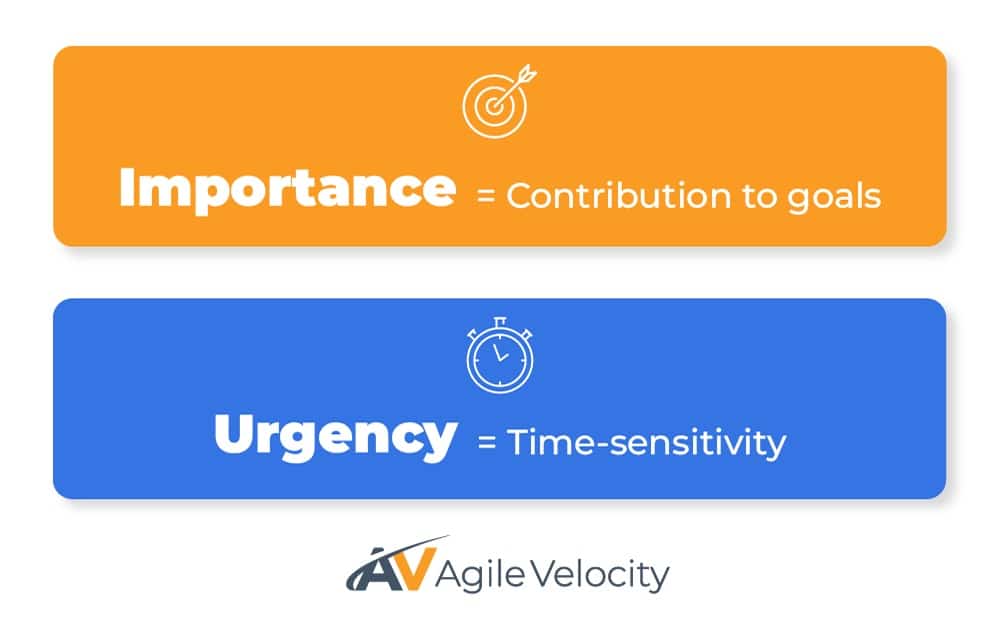
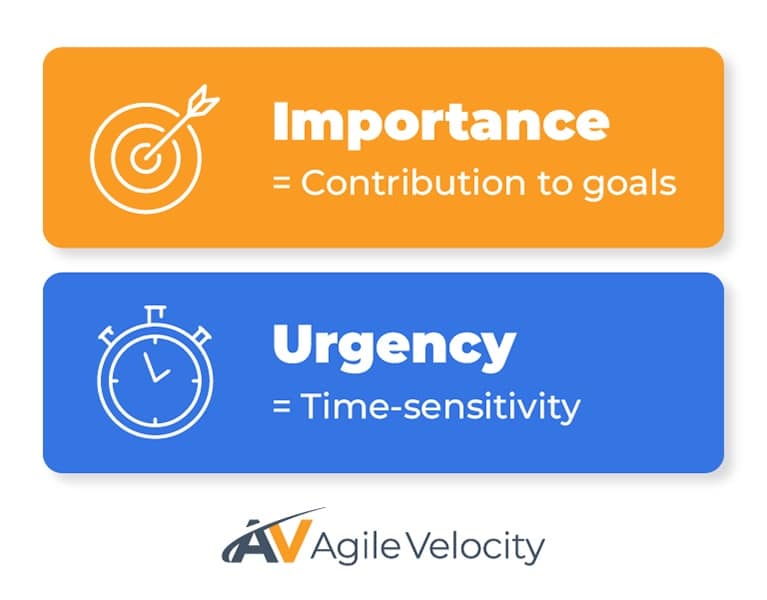
Balancing these two concepts is essential for effective prioritization. Tasks that are both important and urgent require immediate attention as they directly impact the success of the product and the organization. Tasks that are important but not urgent should be scheduled appropriately to ensure strategic objectives are met. Conversely, tasks that are urgent but not important may require delegation or re-evaluation, as they could distract from more value-adding activities.
Misaligning importance and urgency can lead to several negative consequences:
- Missed Deadlines: Focusing on low-priority tasks can delay critical deliverables.
- Wasted Resources: Investing time and effort in non-essential tasks drains resources from high-impact initiatives.
- Failure to Deliver Value: Neglecting important features can result in products that don’t meet customer expectations or business goals.
- Team Burnout: Constantly reacting to urgent but unimportant tasks can lead to stress and decreased morale.
When Product Owners fail to prioritize effectively, teams might focus on tasks that are urgent but offer little value, neglecting more critical features that drive business outcomes. This misalignment can derail projects, leading to stakeholder dissatisfaction, lost revenue opportunities, and diminished team morale.
The Role of Agile Transformation in Prioritization
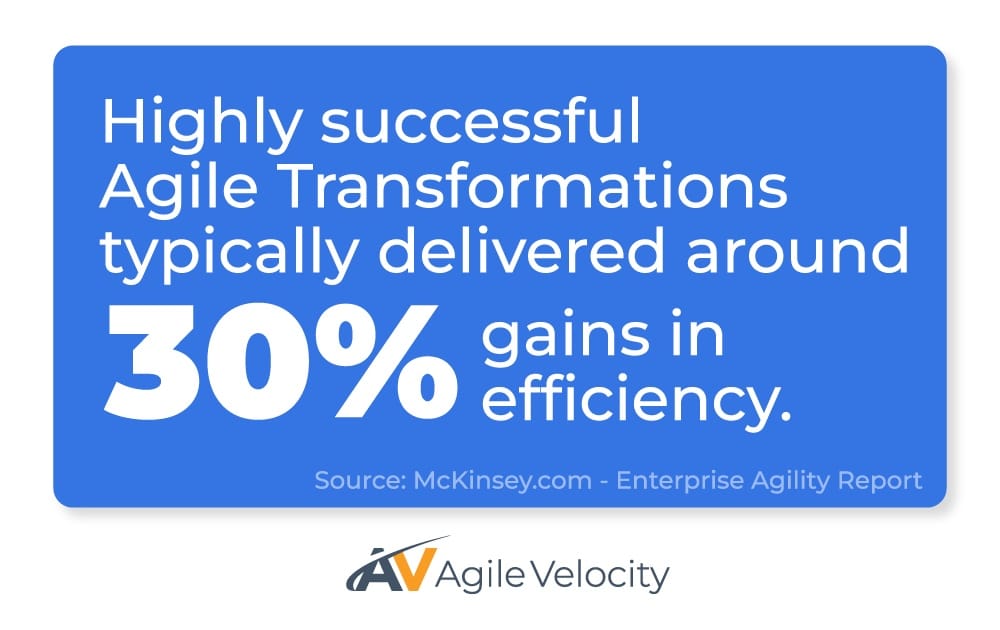

Transitioning from traditional methods to Agile ways of working significantly impacts how priorities are managed. Agile Transformation enables better alignment with business objectives and enhances prioritization by promoting flexibility, collaboration, and iterative delivery.
According to a study by McKinsey’s Enterprise Agility Report, Agile Transformations can lead to operational performance improvements, with organizations achieving a 30% increase in efficiencies, employee engagement, customer satisfaction, and operational performance
Implementing Agile Transformation strategies accelerates responsiveness to market demands, bolsters innovation, and reinforces competitive standing.
Is Your Organization Truly Ready?
The Challenges of Managing Priorities for Product Owners
Product Owners often navigate a complex landscape of competing demands. Stakeholders, customers, and team members all have their own perspectives on what should take precedence. Market trends and customer feedback can shift rapidly, requiring quick adjustments. This dynamic environment makes identifying true priorities a challenging endeavor.
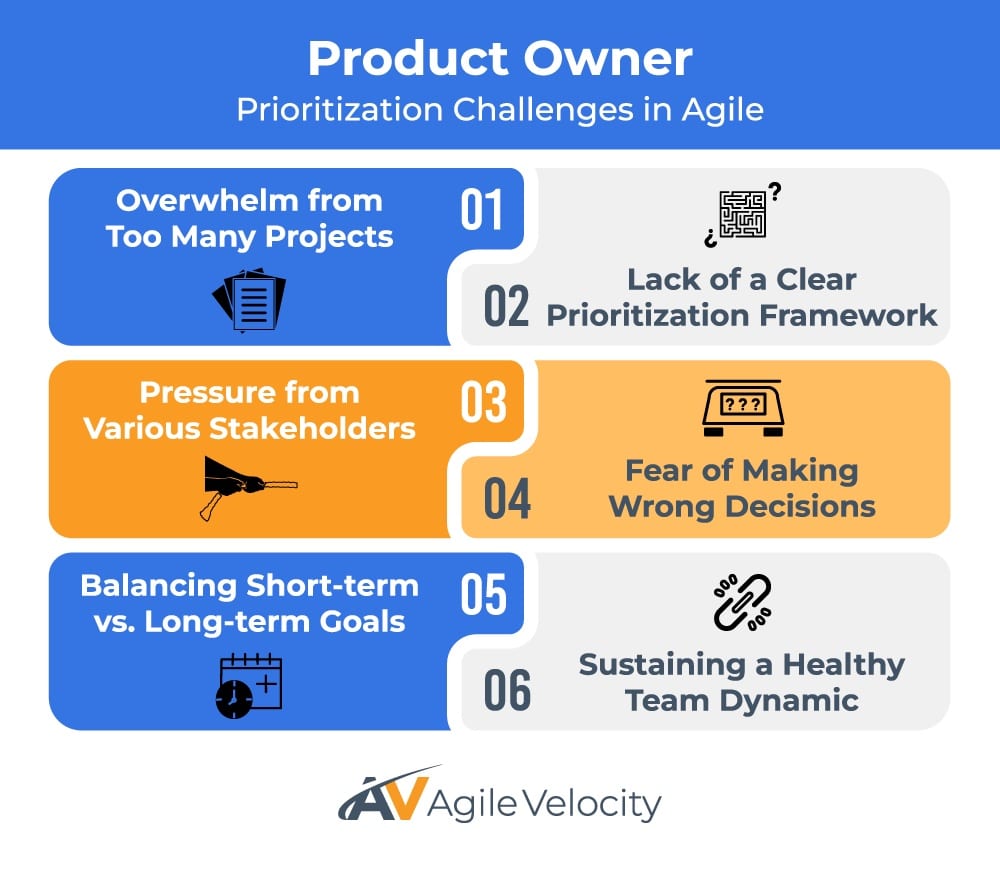
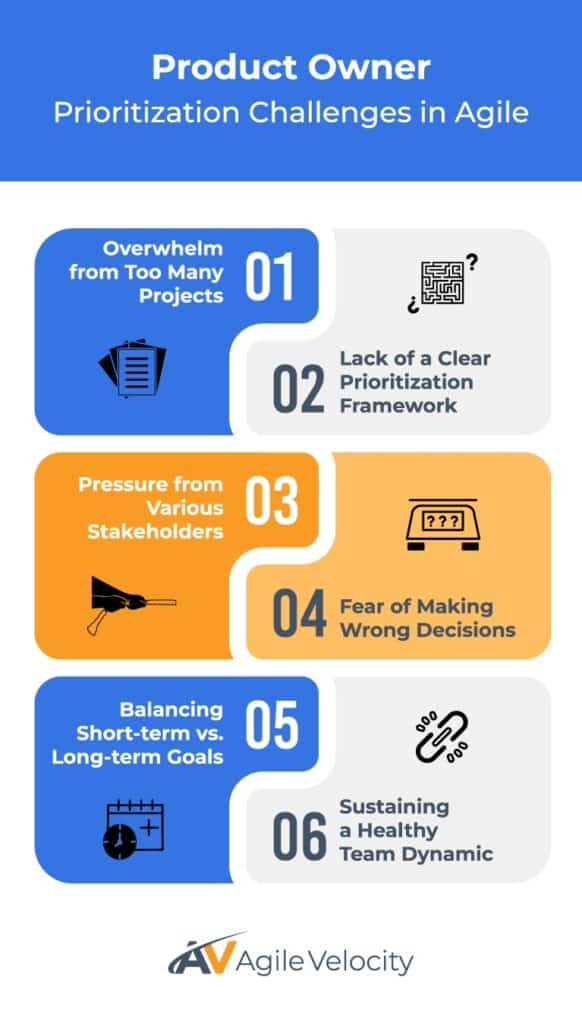
Overwhelm from Too Many Projects
In organizations with multiple initiatives, Product Owners may be responsible for several products or projects simultaneously. This scenario can lead to:
- Confusion over Priorities: Difficulty in identifying which tasks or projects require immediate attention.
- Resource Constraints: Limited availability of team members and budgets spread thinly over multiple projects.
- Context Switching: Frequent shifting between projects reduces efficiency and increases the risk of errors.
Lack of a Clear Prioritization Framework
Without a structured approach, prioritization becomes subjective and inconsistent:
- Biases and Assumptions: Personal preferences or assumptions may influence decisions rather than objective criteria.
- Inconsistent Decision-Making: Different stakeholders may have conflicting views, leading to confusion.
- Inefficient Sessions: Time wasted in discussions without reaching clear conclusions.
Pressure from Various Stakeholders
Stakeholders, including executives, customers, and team members, often have their own agendas:
- Conflicting Demands: Requests from different parties may contradict each other.
- Influence and Politics: Stakeholders with more influence may push their priorities, regardless of strategic alignment.
- Expectation Management: Balancing stakeholder desires with realistic capabilities.
Fear of Making Wrong Decisions
Deciding what the team works on can be daunting:
- Analysis Paralysis: Over-analyzing options can delay decisions.
- Risk Aversion: Avoiding bold decisions due to fear of failure.
- Accountability: Concern over being held responsible for negative outcomes.
Balancing Short-term vs. Long-term Goals
Immediate pressures can overshadow strategic objectives:
- Reactive Mindset: Constantly responding to urgent issues without proactive planning.
- Neglected Innovation: Long-term improvements or innovative features may be deprioritized.
- Sustainability Risks: Focusing solely on short-term gains can harm the product’s future viability.
Sustaining a Healthy Team Dynamic
Poor prioritization impacts project timelines and strains team dynamics:
- Frustration: Team members may feel their efforts are wasted on low-impact tasks.
- Reduced Productivity: Lack of clear direction hampers efficiency.
- Lower Quality of Work: Rushed tasks or frequent changes can compromise quality.
Proven Strategies for Balancing Importance and Urgency
– Mike Cohn
To navigate the many challenges that Product Owners face, try employing the following strategies.
Utilize Prioritization Methods
Product Owners can greatly benefit from utilizing structured methods and frameworks to support effective decision-making when balancing importance and urgency. By implementing prioritization methods, they can achieve a more strategic approach to managing their tasks, ensuring that their teams focus on what truly matters and enhance overall productivity. Here are a few prioritization methods Product Owners can adopt to improve decision-making processes:
- Eisenhower Matrix: This method separates tasks based on their level of importance and urgency into four quadrants—do first (urgent and important), schedule (important but not urgent), delegate (urgent but not important), and eliminate (neither urgent nor important). This visual approach clarifies what actions to take and helps streamline daily activities.
- MoSCoW Method: A prioritization technique that categorizes tasks into four groups: Must Have, Should Have, Could Have, and Won’t Have. This ensures clear priority differentiation based on necessity and strategic value, making it easier to allocate resources efficiently and satisfy stakeholder expectations.
- Kano Model: By gauging customer satisfaction, the Kano Model assists in identifying which features delight users and contribute to loyalty. It classifies features into categories such as basic needs, performance needs, and excitement needs, guiding Product Owners in decision-making to focus on user-centric tasks.
- Value vs. Effort Matrix: This involves plotting tasks on a matrix based on their value (importance) and the required effort, helping in quickly identifying high-value, low-effort tasks that can deliver quick wins. This approach is beneficial in generating momentum and maintaining stakeholder satisfaction.
- RICE Scoring: RICE stands for Reach, Impact, Confidence, and Effort. By evaluating each factor, Product Owners can assign scores to features or tasks, which helps to quantitatively prioritize tasks based on their potential return on investment and alignment with business objectives.
By leveraging these prioritization methods, Product Owners can systematically and consistently determine which tasks should be prioritized, thereby enhancing project outcomes and supporting organizational objectives.
Leverage Agile Practices and Events
Agile provides built-in mechanisms for prioritization. Different practices and events are utilized in different frameworks, but here’s a few commonly used practices to prioritize:
Backlog Refinement
Regular Backlog Refinement sessions keep the Product Backlog up to date:
- Review and Adjust: Add new items, remove obsolete ones, and re-prioritize as needed.
- Clarify Requirements: Ensure that backlog items have enough detail for the team to understand.
- Align with Stakeholders: Incorporate feedback and changes in priorities.
Sprint Planning
During Sprint Planning, the team and Product Owner decide what to work on next:
- Set Sprint Goals: Define what the team aims to achieve.
- Select Backlog Items: Choose high-priority tasks that fit within the team’s capacity.
- Collaborative Decision-Making: Team input ensures feasibility and commitment.
Daily Scrum
Daily Scrum sessions help in addressing immediate concerns:
- Identify Blockers: Quickly resolve issues that may affect task urgency.
- Adjust Priorities: Respond to new information or changes in urgency.
- Maintain Transparency: Keep everyone informed about progress and any shifts in focus.
Enhancing Prioritization with Help From an Agile Coach

Agile coaches play a vital role in empowering Product Owners and their teams to master the art of prioritization. With their deep understanding of Agile principles, coaches offer personalized guidance tailored to the team’s unique challenges and objectives. They help teams implement effective prioritization techniques, enhance communication, and improve collaboration between stakeholders and team members. By fostering an environment of continuous improvement, Agile coaches equip teams with the tools and confidence needed to make informed decisions, ensuring that tasks are aligned with business goals and customer value.
Through workshops, training sessions, and one-on-one coaching, they provide insights and support that streamline prioritization processes and significantly improve project outcomes. Here are just a few ways an Agile coach can be an invaluable asset for teams striving for the promises of Agile:
Effective Stakeholder Management
Agile coaches play an integral role in refining stakeholder management by actively facilitating transparent communication and aligning stakeholder expectations with business objectives. They empower Product Owners to navigate stakeholder dynamics effectively, ensuring diverse perspectives are considered and fostering a collaborative environment. This strategic expertise mitigates conflicts and enhances decision-making, ultimately boosting project success and stakeholder satisfaction.
Balancing stakeholder demands requires:
Transparent Communication
- Explain Decisions: Share the reasoning behind prioritization choices.
- Provide Updates: Keep stakeholders informed about progress and changes.
- Open Dialogue: Encourage feedback and address concerns promptly.
Expectation Management
- Set Realistic Goals: Ensure stakeholders understand what is achievable.
- Negotiate Priorities: Collaborate to align on what matters most.
- Document Agreements: Keep a record of decisions to prevent misunderstandings.
Alignment with Business Objectives
Agile coaches play a crucial role in aligning project priorities with overarching business objectives, ensuring that the team’s efforts consistently drive value and support strategic goals. By providing expert guidance and facilitating collaborative discussions, Agile coaches help streamline processes and optimize resource allocation for greater organizational impact.
Always tie tasks back to overarching business goals:
- Value Delivery: Focus on features that enhance customer satisfaction and drive revenue.
- Strategic Alignment: Ensure tasks contribute to long-term plans.
- Metrics and KPIs: Use data to inform decisions and demonstrate impact.
Building Buffer for Urgent Tasks
Agile coaches can assist teams in building a buffer for urgent tasks by advocating for flexible planning and proactive time management. By guiding Product Owners to anticipate potential disruptions, Agile coaches help them allocate resources and maintain a balance between reactive and strategic work.
Preparing for unforeseen events involves:
- Schedule Flexibility: Allocate capacity for unexpected high-priority tasks.
- Risk Management: Identify potential issues early and plan contingencies.
- Avoid Over-Commitment: Ensure the team isn’t overloaded, allowing for adaptability.
Encouraging Team Collaboration
Agile coaches play a pivotal role in fostering a collaborative team environment by promoting open communication and cohesive teamwork. They equip teams with effective tools and techniques to enhance synergy, ensuring seamless collaboration and improved project execution.
A collaborative approach strengthens prioritization:
- Empower the Team: Involve team members in discussions about priorities.
- Leverage Expertise: Tap into the team’s knowledge to assess task importance and urgency.
- Collective Ownership: Promote a shared commitment to project success.
Benefits of Effective Prioritization in Agile Environments


Balancing importance and urgency brings numerous advantages:
Improved Project Outcomes
- Value Delivery: Ensures that the most valuable tasks are completed first, enhancing customer satisfaction.
- Quality Improvement: Focused efforts lead to higher-quality deliverables.
Deadline Adherence
- Efficient Resource Utilization: Optimal allocation of time and effort prevents delays.
- Risk Reduction: Anticipating and managing urgent tasks prevents last-minute crises.
Better Alignment with Business Goals
- Strategic Focus: Activities are directly linked to business objectives.
- Market Responsiveness: Ability to adapt to changes ensures competitiveness.
Enhanced Team Performance
- Clear Direction: Knowing what to work on boosts motivation and efficiency.
- Reduced Conflict: Agreed-upon priorities minimize disagreements.
Increased Stakeholder Satisfaction
- Trust Building: Consistent delivery of promised features strengthens relationships.
- Expectation Management: Transparency reduces surprises and disappointments.
Competitive Advantage
- Innovation Enablement: Time is allocated for strategic initiatives and innovation.
- Market Leadership: Being first with valuable features can capture market share.
Additionally, organizations implementing effective prioritization strategies often see gains in efficiency and employee engagement. Agile organizations can achieve significant improvements in performance metrics, enhancing their likelihood of reaching top industry positions.
Unlocking Success through Strategic Prioritization

Mastering the balance of importance and urgency is crucial for Product Owners aiming for success in Agile environments. By utilizing structured prioritization frameworks, leveraging Agile practices, and fostering collaboration, Product Owners can navigate the complexities of their role more effectively.
Agile Velocity serves as a valuable resource in this journey by providing consultation, training services, and tools to help organizations assess capabilities, generate prioritized roadmaps, and track progress. It supports Agile teams in making informed decisions that align with business outcomes and enhance organizational agility.
Transform your prioritization strategies today and lead your team to unparalleled success! Contact us today to explore how Agile Velocity can enhance your Agile Transformation and elevate your project management efficiency.



